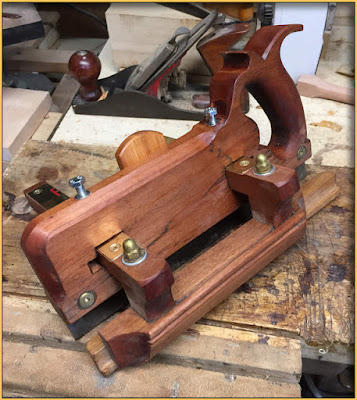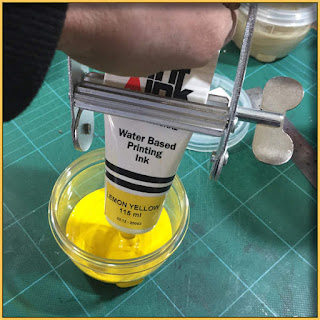There are dedicated tools available for the woodturner to enable the precise sizing of tenons. They're not cheap.
Or, if you're more ambidextrous than I am, you can get decent results with a caliper in one hand and a turning tool in the other.
However, I've found that for easy, repeatable tenons in small sizes, such as for drawer pulls and the like, a simple spanner does the job.
I grind an edge on the nose of one arm, at about 45° - 50°, and leave the other blunt. In fact it would probably be a good idea to polish the nose of the other arm, maybe.
Note that in this photo I've sharpened the wrong arm, as discussed below, though in truth it's not that critical.
I bring the blunt nose on the bottom side of the work into contact and then ease the sharp nose in, all the while bearing up on the bottom to keep it in contact.
When the mouth of the spanner slides in around the tenon, you've finished cutting, and you'll have a tenon exactly the same diameter as the size of the spanner.
The way that spanner heads are angled, one arm is canted forward and looks slightly longer than the other (I think this is just an optical illusion, but I'm not sure). This should really be the bottom blunt arm as it makes it easier to address the tool to the work.
Individual spanners are pretty cheap, and are generally made of decent quality steel — though not tool steel, of course. There's no reason why you couldn't have a whole range of spanners sharpened for cutting a range of tenon sizes.
The edge is not going to be a fine cutting edge, and it won't stay very sharp forever, but you can keep resharpening it as long as the length of the cutting arm is greater than the radius of the tenon. Just be sure, when sharpening, to keep the edge square to the length of the spanner; if it is angled, you won't get a square cut.
The only real issue I've found is with small spanners, say 6 to 8 mm, and that is that they're, well, small. Or rather, short. That can make them a bit more difficult to handle, but if you were really keen you could probably just cut off the ring-end and mount your little cutting spanner in a handle to give you a bit more to hang on to.


















































